Tom's Hardware Verdict
Unless you’re a backlight strobe purist, the Porsche Design AOC Agon PD27 has no flaws. It delivers premium gaming performance with 240 Hz, Adaptive-Sync, HDR and a high-contrast VA panel with 1440p resolution. And its physical aesthetic is unmatched at any price.
Pros
- +
240 Hz
- +
Wide, accurate color gamut
- +
High contrast
- +
Excellent HDR
- +
Build quality, styling
Cons
- -
Backlight strobe causes some smearing
- -
Expensive
Why you can trust Tom's Hardware
Most players are looking for a gaming monitor that provides maximum performance for the money. But many premium and mid-priced models include some kind of style element, usually a lighting feature, to set themselves apart. Occasionally, a company goes all out on aesthetics with a product that sits well above the rank and file. AOC has done this by partnering with a company that needs no introduction, Porsche Design.
The Porsche Design AOC Agon PD27 is one of the most attractive monitors we’ve seen, more stylish than most of the best gaming monitors with a unique stand and completely customizable lighting with glowing colors and a pattern that projects on your desk. There’s also an all-metal wireless remote that looks like something from a modern art museum.
But don’t think the PD27 places style over substance. Under the hood, there’s a 1440p resolution VA panel with 3,000:1 contrast, HDR, extended color, 240 Hz, Adaptive-Sync and a backlight strobe for fighting motion blur. There’s even strong sound, via two 5W internal speakers and DTS tuning with multiple sound effect modes.
Expensive? Of course ($750 as of writing). But if you want style, there’s nothing else like it.
Porsche Design AOC Agon PD27 Specs
| Panel Type / Backlight | VA / W-LED, edge array |
| Screen Size , Aspect Ratio & Curve | 27 inches / 16:9 |
| Row 2 - Cell 0 | Curve radius: 1000mm |
| Max Resolution & Refresh | 2560x1440 @ 240 Hz |
| Row 4 - Cell 0 | AMD FreeSync Premium Pro: 48-240 Hz |
| Native Color Depth & Gamut | 8-bit / DCI-P3 |
| Row 6 - Cell 0 | HDR10, DisplayHDR 400 |
| Response Time (MPRT) | 0.5 ms |
| Brightness (mfr) | 550 nits |
| Contrast (mfr) | 2,500:1 |
| Speakers | 2x 5w, DTS-tuned |
| Video Inputs | 2x DisplayPort 1.4 |
| Row 12 - Cell 0 | 2x HDMI 2.0 |
| Audio | 3.5mm headphone output |
| USB 3.2 | 1x up, 4x down |
| Power Consumption | 34.6w, brightness @ 200 nits |
| Panel Dimensions WxHxD w/base | 23.9 x 17.1-23.1 x 12.7 inches (606 x 434-587 x 322mm) |
| Bezel Width | Top/sides: 0.3 inch (8mm) |
| Row 18 - Cell 0 | Bottom: 1.1 inches (28mm) |
| Weight | 19.6 pounds (8.9kg) |
| Warranty | 4 years |
This isn’t AOC’s first collaboration with Porsche Design. In 2018, we reviewed the PDS271, an enterprise monitor that brought a minimalist style and merely average performance to the table. The PD27 ups the ante considerably.
A 27-inch VA panel with a 1000R curve claims an honest 3000:1 contrast ratio. It’s Adaptive-Sync of choice is AMD FreeSync Premium Pro, which adds low framerate compensation (LFC) and HDR support compared to standard FreeSync. It’s not Nvidia-certified, but we also got G-Sync to run (see: How to Run G-Sync on a FreeSync Monitor).
HDR10 signals are supported with either Adaptive-Sync or blur reduction up to 240 Hz over the two DisplayPort 1.4 inputs. Alternatively, you can use either of the two HDMI 2.0 ports for refresh rates as high as 144 Hz (see: DisplayPort vs HDMI: Which is Better?).
Get Tom's Hardware's best news and in-depth reviews, straight to your inbox.
Assembly and Accessories of the AOC Agon PD27
The AOC Agon PD27 ships in rubbery foam, not the crumbly kind, and is packaged beautifully, worthy of an unboxing video. The stand and panel are permanently mated, so there’s no option for an aftermarket arm or bracket, not that you’d want one.
Accessories are in a nice presentation-style box and include HDMI, DisplayPort and USB cables along with a large external power supply.
Product 360

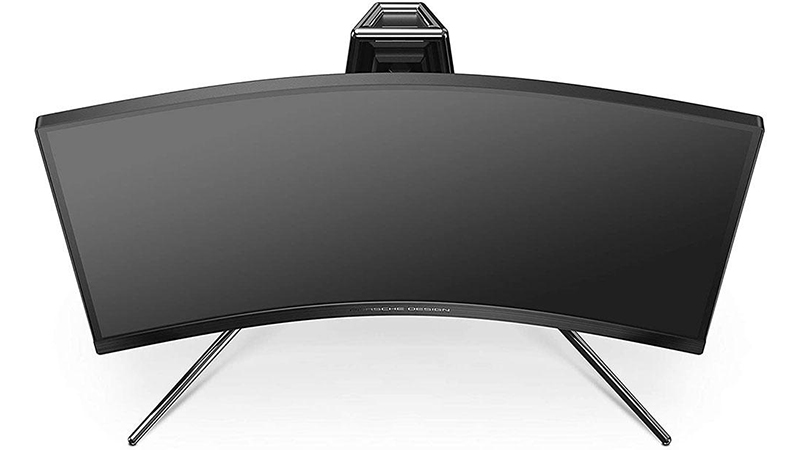





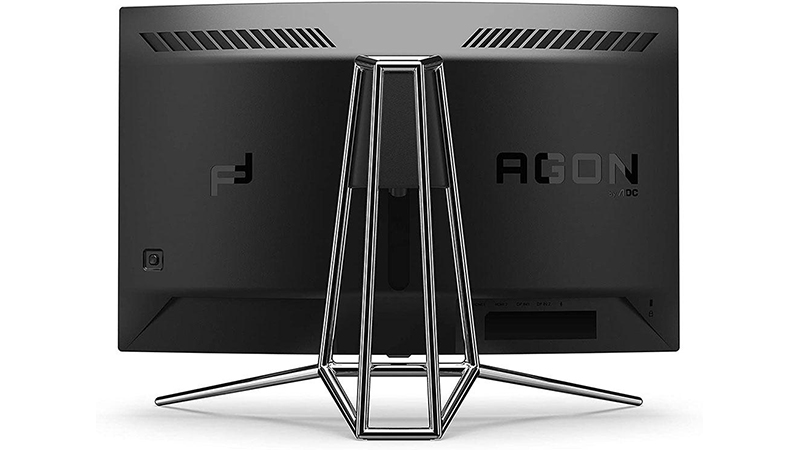
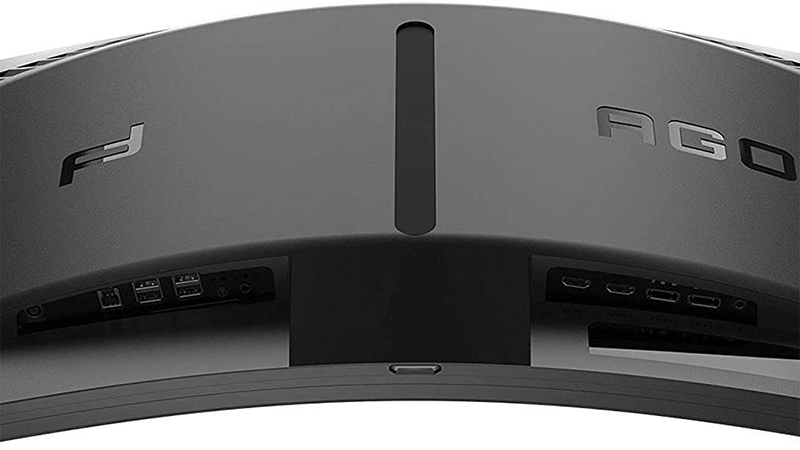
Style? Oh yeah, there’s lots of that. Right from the start, the eye is drawn to the AOC Agon PD27’s unique metal stand, making the lack of VESA mounting understandable. The stand is made from chrome-plated tubing meant to evoke a racecar’s roll cage. While it doesn’t have visible weld marks like the real article, it does remind us of something automotive. It’s quite beautiful and substantial. Not only is it rock-solid, but the footprint is quite deep at nearly 13 inches. You’ll need to clear a little more space on your desk than you would for the average 27-inch monitor.
In front, the Porsche Design logo is proudly displayed in shiny metal letters against a brushed finish. The top and side bezels are thin and flush, just 8mm wide. If you reach around the right side, you’ll find the joystick, which integrates all monitor controls, including power. You can tell power status via a tiny LED: orange for standby and white for powered.
The chrome-plated stand is one of the most solid pieces out there, and it offers full ergonomics. You get nearly 6 inches of height adjustment, along with 150degree swivel either way and 23-degree tilt. Movements are as good as it gets with just the right resistance level and easily controlled positioning.
Gamers will enjoy not only the PD27’s advanced video processing and 240 Hz refresh rate, but also its extensive lighting features. The lighting effect comes in two flavors. An LED ring surrounds the stand/panel pivot point and casts a large glow off the back of the AOC Agon PD27. A projector is also included that casts the Porsche Design logo on your desktop. There are dozens of preset effects or you can customize the color with RGB values for both sets of lights in the OSD.
-Tying it all together is one of the coolest remotes we’ve ever seen. Not too many 27-inch monitors include remotes, but AOC has created a slick metal piece that works wirelessly. It has full OSD navigation ,plus three programmable keys for preset modes. Like the rest of the Agon PD27, it’s quite substantial and definitely worthy of a premium display like this.
The input panel is well-stocked and split across two sections. Video inputs include two each of HDMI 2.0 (144 Hz) and DisplayPort 1.4 (240 Hz). Both interfaces support Adaptive-Sync and HDR. A 3.5mm audio jack is right next to the DPs. On the other side are USB 3.2 ports, one upstream and four down.
OSD Features of the AOC PD27
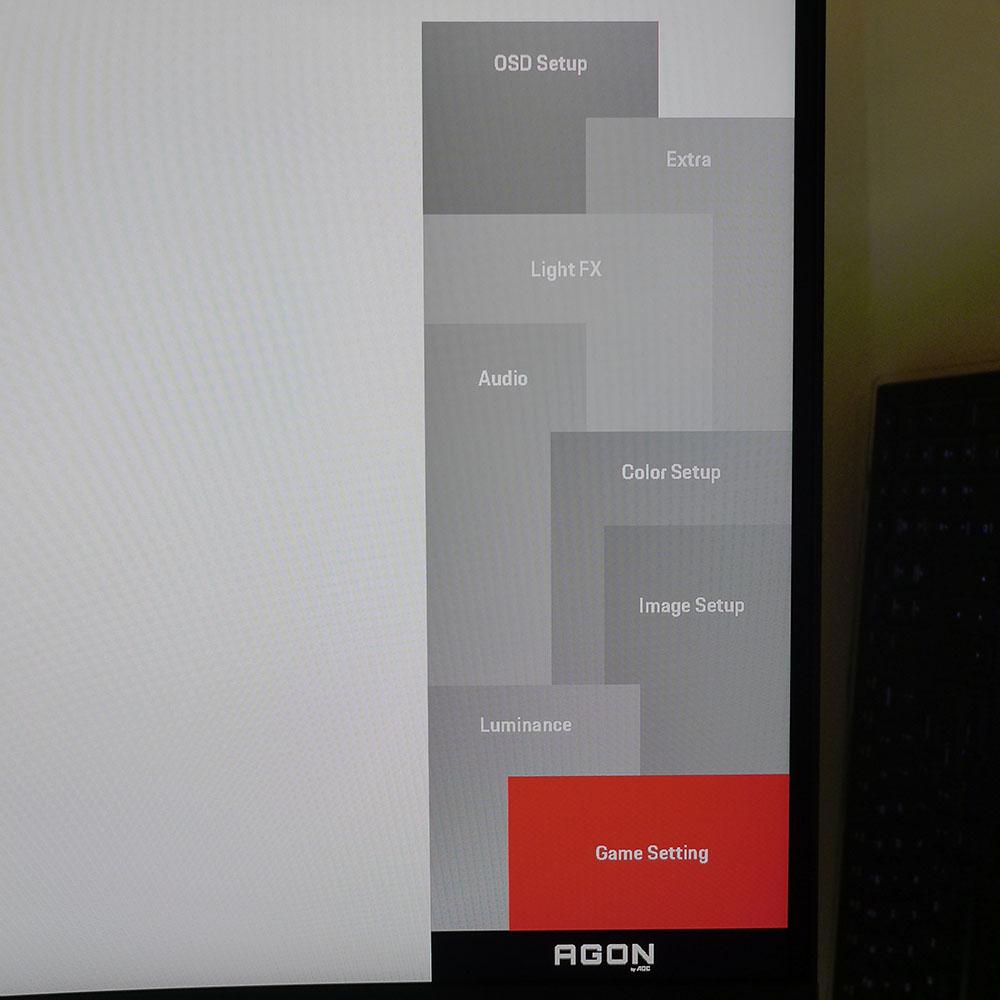
The PD27 unique styling carries all the way down to its OSD, well with a cascading card look to denote the eight sub-menus. Once you dig in, you’ll find it arranged like that of other AOC monitors and easily controllable. Osd2
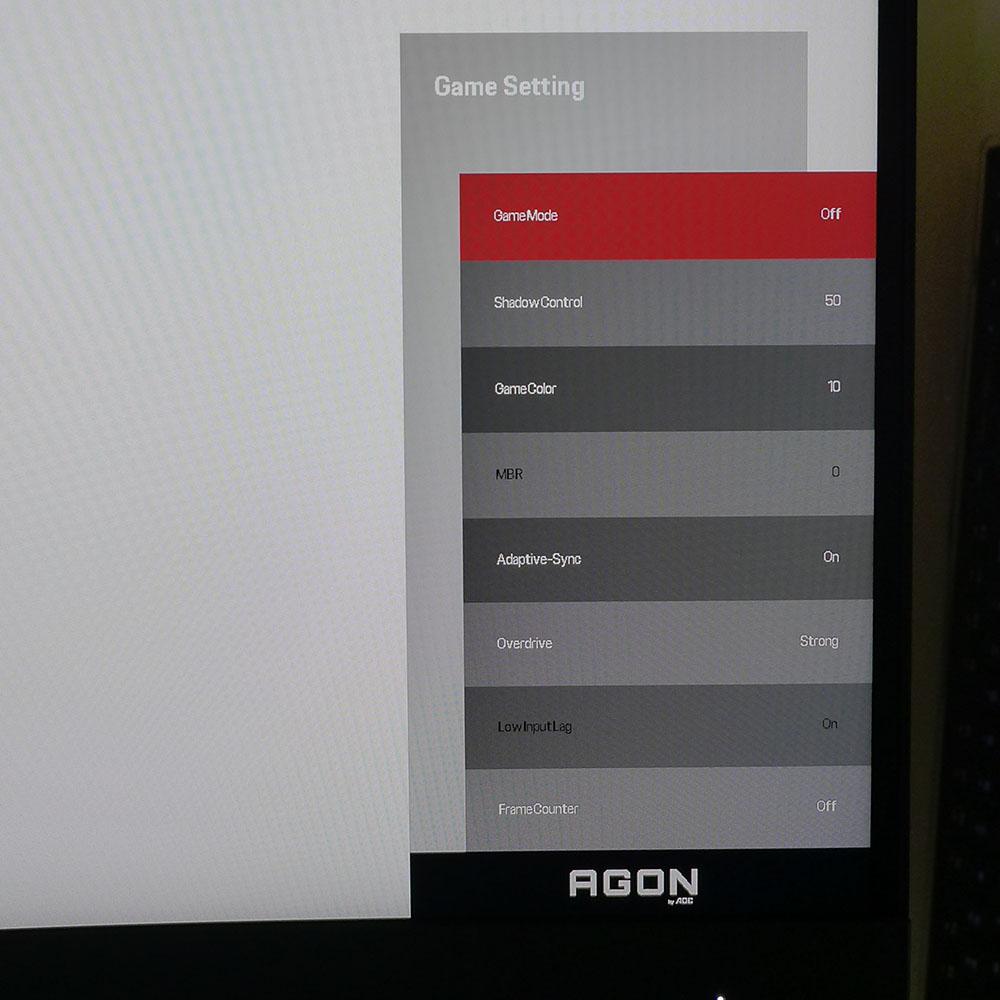
The Game Setting menu has three game-specific picture modes and three user memories apart from the image presets in the Luminance menu. To keep things simple, we left Game Mode off and did all testing in the Standard Eco mode. This menu also has Shadow Control, which makes dark detail brighter. Its five settings are very coarse and even one click will turn the lovely deep blacks into a murky gray. MBR is the PD27’s blur reduction feature. It operates at up to 240 Hz and cancels Adaptive-Sync. We found a few issues there, which we’ll tell you about in the Hands-on section.
Overdrive has three levels and works well at its Medium setting. If you want to monitor frame rates, turn on the FrameCounter.
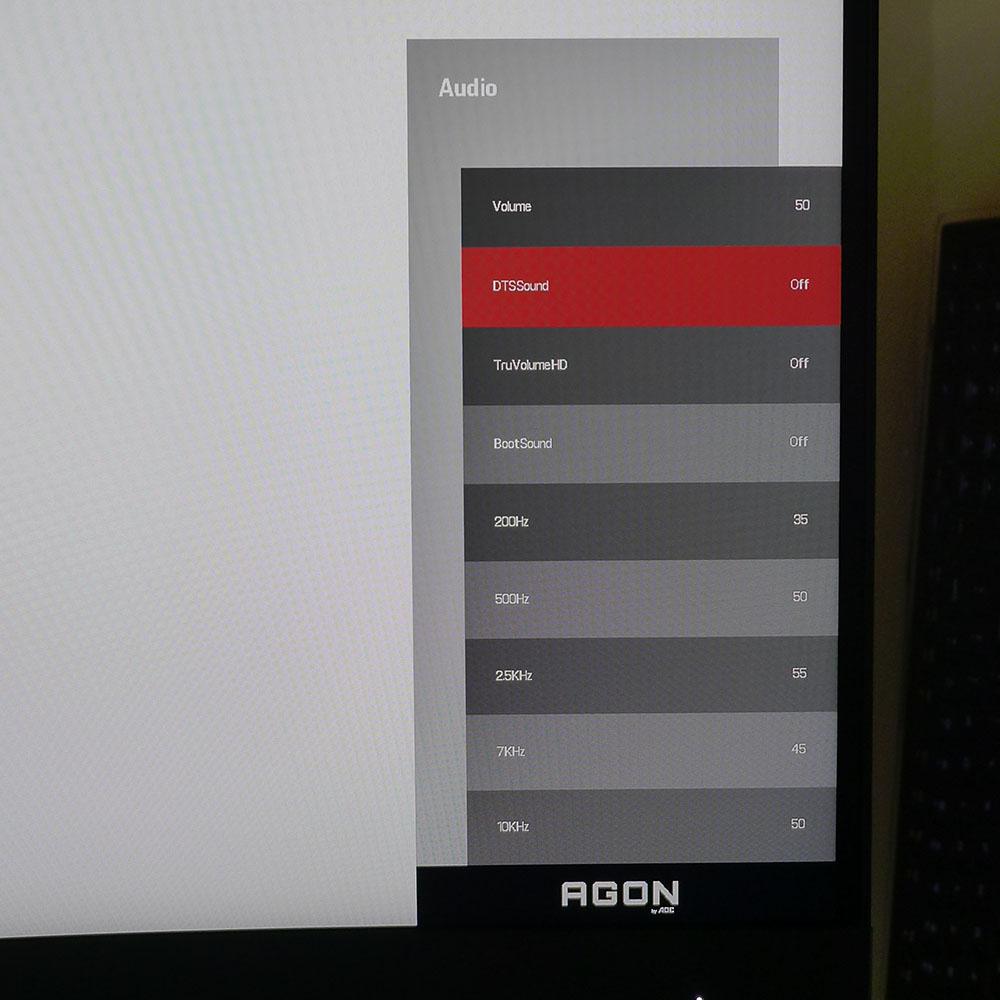
The Audio menu has much more than just volume and mute controls. There are five sound modes that use phase and frequency manipulation to create different sound stages. Or choose Off and set the equalization yourself over five bands from 200 Hz to 7 kHz.
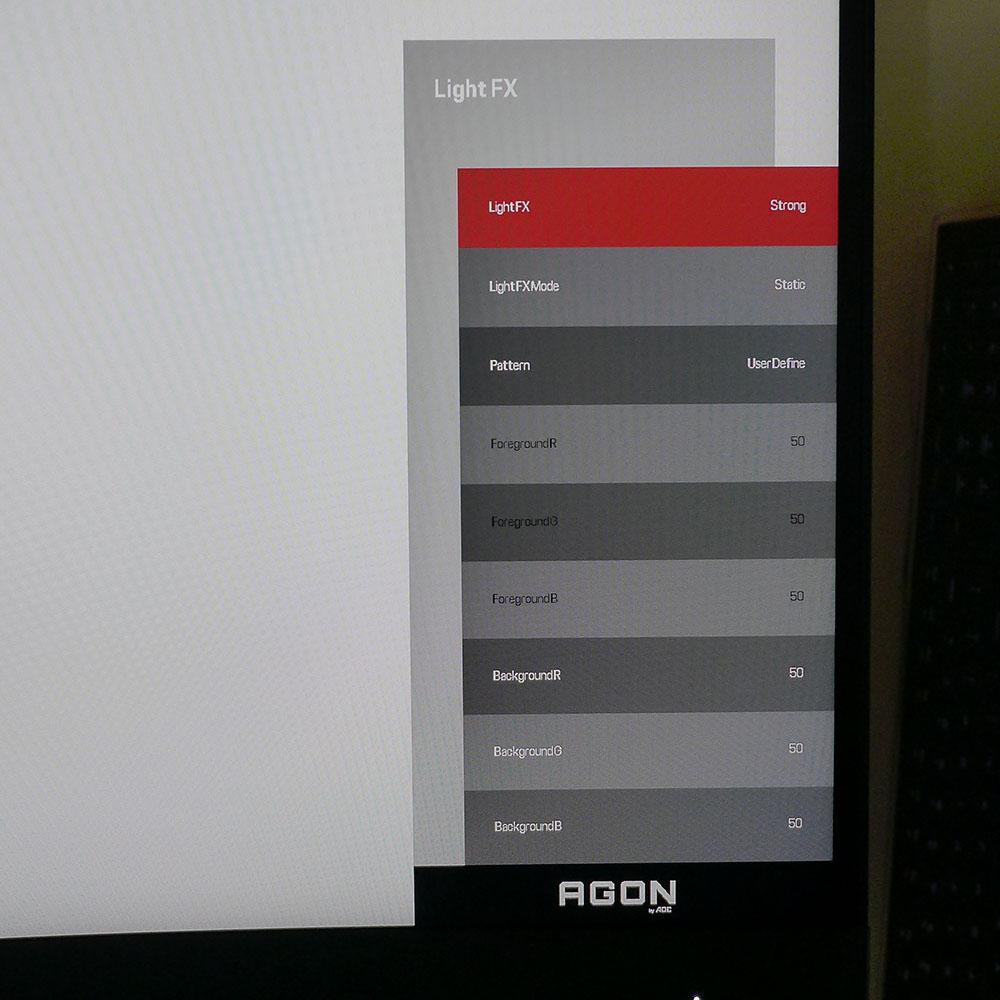
LightFX is where you’ll find the many options for the main LED ring around the stand’s pivot. There are preset modes, or you can change intensity, color and pattern manually. Color is controlled with RGB sliders, so, in theory, there are millions of possibilities. Oddly, the control for the logo projector is in another menu called Extra. It too has user selectable intensity and color options.
Porsche Design AOC Agon PD27 Calibration Settings
You won’t need to calibrate the AOC Agon PD27 if you do one thing: change the color temp to User Define. That single adjustment provides superb accuracy in all metrics within the DCI-P3 color gamut. If you prefer to play your SDR games in sRGB color, there’s an option for that in the color temp menu, and it, too, is quite accurate. We tweaked the RGB sliders just a bit for ego’s sake. There are three gamma presets, but again, the default setting is best.
Below are our recommended calibration settings for the Porsche Design AOC Agon PD27 and SDR content.
| Eco Mode | Standard (Game Mode Off) |
| Brightness 200 nits | 70 |
| Brightness 120 nits | 21 |
| Brightness 100 nits | 7 (min. 89 nits) |
| Contrast | 50 |
| Gamma | 1 |
| Color Temp User | Red 49, Green 50, Blue 49 |
When you apply an HDR signal, the AOC Agon PD27 switches over automatically and offers four additional picture modes. DisplayHDR is the default and best choice. There are no adjustments for HDR content, but none are needed, as you’ll see on page four.
Gaming and Hands-on with the AOC Agon PD27
The curve is pronounced with a tight 1000mm radius. That’s as tight as it gets these days. You’ll see some distortion of things like spreadsheets and documents on the PD27, but moving images look natural as they cross the screen. We’ve experienced this extreme curve before in the Samsung Odyssey G7 32-Inch It’s a real asset to gaming and movie watching though a 32-inch screen makes better use of the radius than the AOC Agon PD27.
The AOC Agon PD27 is a bit small for its extreme curvature for a balance of workday tasks and gaming. 1000R is as curvy as it gets, and we’ve tried this spec with the Samsung G7 but were spoiled by its 32-inch size and extra height compared to the PD27. But the AOC has excellent color with a bright and sharp picture, so it is certainly capable of pushing through spreadsheets and word processing.
Watching video is pleasure with a screen that wraps this much. We felt a greater sense of immersion when checking out movies and TV shows through various streaming services. And the audio quality was well beyond what we usually hear from internal monitor speakers. Audio is provided by two 5W speakers with DTS-tuning and multiple effects modes. Or you can tailor the sound yourself with a multi-band equalizer in the OSD, setting the equalization yourself over five bands from 200 Hz to 7 kHz. Sound quality is a cut above the norm for internal monitor speakers with rich full audio and a feeling of spaciousness.
The DTS tuning created a far larger space with sounds clearly coming from different parts of the screen. Some phased effects even seemed to come from behind, giving a decent approximation of surround sound. There isn’t a ton of bass, but dialogue sounded crystal-clear and never chesty.
Gaming is clearly the PD27’s forte. Both FreeSync and (unofficial) G-Sync worked perfectly with or without HDR. An RTX 3090 video card had no trouble maintaining 240 frames per second (fps) in both Tomb Raider and Call of Duty: WWII with detail set to maximum. Our Radeon RX 5700 XT managed about 200 fps with the same games. The AOC Agon PD27 can keep up with your best graphics cards and favorite games. HDR only cost us about 10 fps and definitely enhanced the Call of Duty experience with clearer shadow detail and bright highlights.
Color and contrast were excellent in both SDR and HDR modes. The large and accurate gamut was apparent, especially in bright and colorful material, which looked vibrant and three-dimensional. VA contrast is on full display here as the PD27 has a very broad native dynamic range. If AOC ever wished to add dynamic contrast to the monitor’s HDR mode, it would look even better. But we had no complaints; HDR looked better than it does on most of the IPS screens we’ve tested.
When monitors run at 240 Hz or faster, it’s feasible to choose the backlight strobe over Adaptive-Sync. We did this successfully in our recent review of the Alienware AW2521H, where ultra-low motion blur (ULMB) at 240 Hz provided smoother motion than G-Sync at 360 Hz. The PD27, however, is not in that category. Its blur reduction (AOC calls it MBR) doesn’t work all that well. It looked fine when running BlurBusters test patterns, but in games, there was a slight smearing effect that can’t be solved with the overdrive.
The best choice is to leave Adaptive-sSnc turned on and run the overdrive at its Medium setting. That keeps detail clear when the action gets intense. If you are a backlight strobe purist, the AOC Agon PD27 is not for you. But its implementation of adaptive sync and overdrive is flawless.

Christian Eberle is a Contributing Editor for Tom's Hardware US. He's a veteran reviewer of A/V equipment, specializing in monitors. Christian began his obsession with tech when he built his first PC in 1991, a 286 running DOS 3.0 at a blazing 12MHz. In 2006, he undertook training from the Imaging Science Foundation in video calibration and testing and thus started a passion for precise imaging that persists to this day. He is also a professional musician with a degree from the New England Conservatory as a classical bassoonist which he used to good effect as a performer with the West Point Army Band from 1987 to 2013. He enjoys watching movies and listening to high-end audio in his custom-built home theater and can be seen riding trails near his home on a race-ready ICE VTX recumbent trike. Christian enjoys the endless summer in Florida where he lives with his wife and Chihuahua and plays with orchestras around the state.
-
Dantte So the very end of the read the author compares the Argon to the Samsung G7 32" "with similar specs".... Why not compare it to the G7 27" with all the same specs except 1; the G7 27" is rated at HDR600, not HDR400? So for the same price and maybe cheaper, you can get the EXACT SAME panel from Samsung with BETTER backlighting!Reply
Which brings me to; why havent any of the Samsung Odyssey panels been tested by Toms; they been available since early Fall and only now is the competition finally coming out with their own products? -
Sleepy_Hollowed ReplyDantte said:So the very end of the read the author compares the Argon to the Samsung G7 32" "with similar specs".... Why not compare it to the G7 27" with all the same specs except 1; the G7 27" is rated at HDR600, not HDR400? So for the same price and maybe cheaper, you can get the EXACT SAME panel from Samsung with BETTER backlighting!
Which brings me to; why havent any of the Samsung Odyssey panels been tested by Toms; they been available since early Fall and only now is the competition finally coming out with their own products?
The extra brightness is not necessarily a good thing for some people (like me), and though I’m a niche, the panel you refer to has a nasty blue light on the back. -
emgarf Some may call that stand "stylish", but on my desk it would just be in the way. The pedestal stand on my Dell U3818DW is rock-solid and takes up much less space.Reply -
Dantte Reply
You can lower the brightness to your liking, and the "nasty blue light" on the back you can turn off. So you dont prefer the G7 over this because you'll have to make an adjustment that takes 10secs? You would rather spend $100 more for an inferior display because 10secs to adjust it to your needs is too much?Sleepy_Hollowed said:The extra brightness is not necessarily a good thing for some people (like me), and though I’m a niche, the panel you refer to has a nasty blue light on the back.
